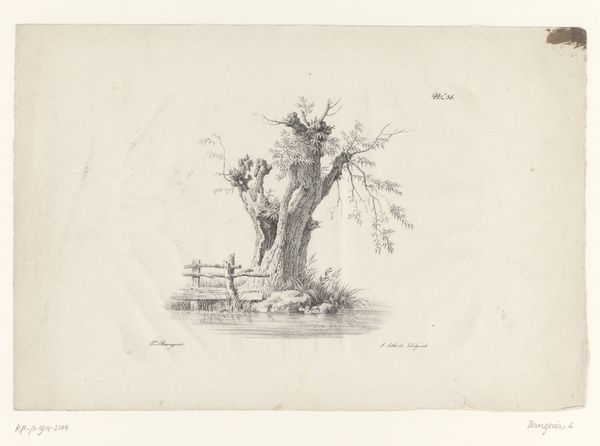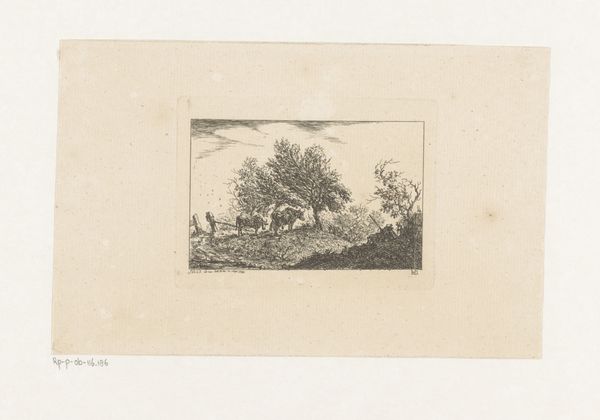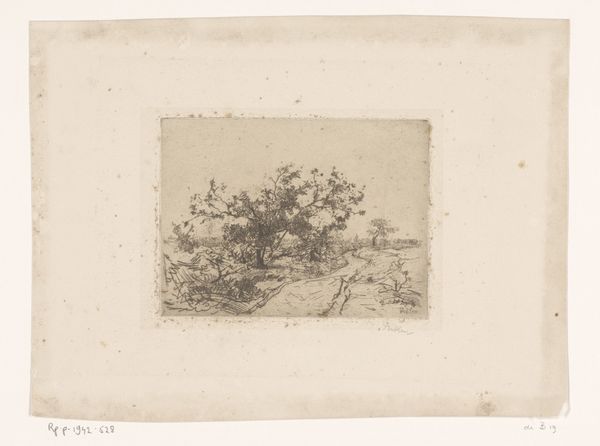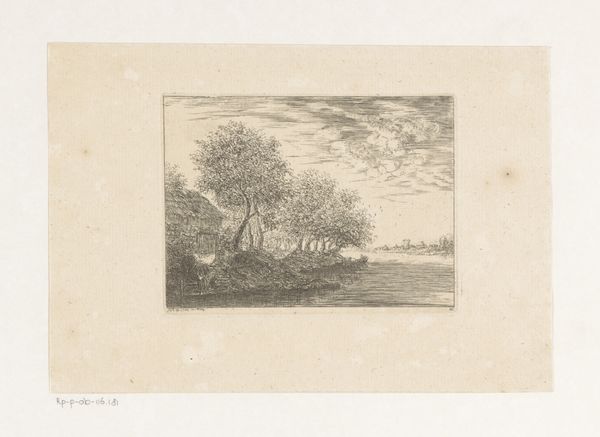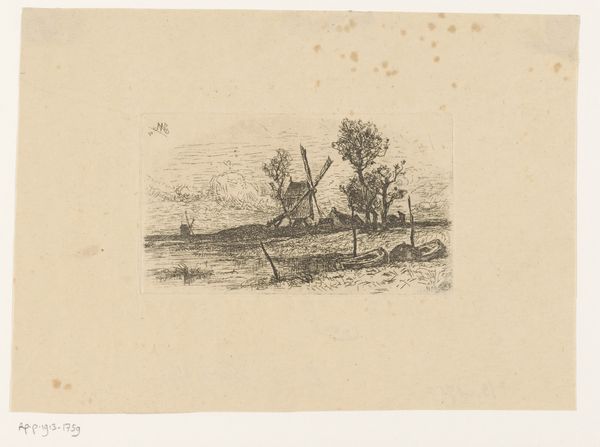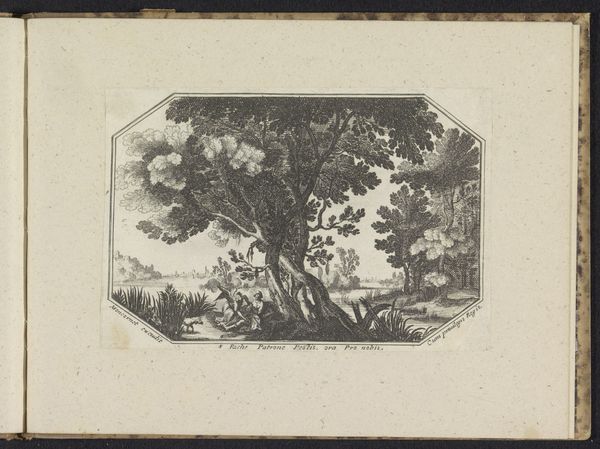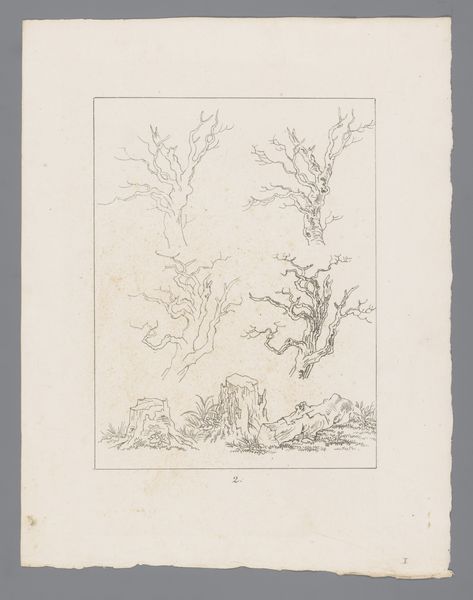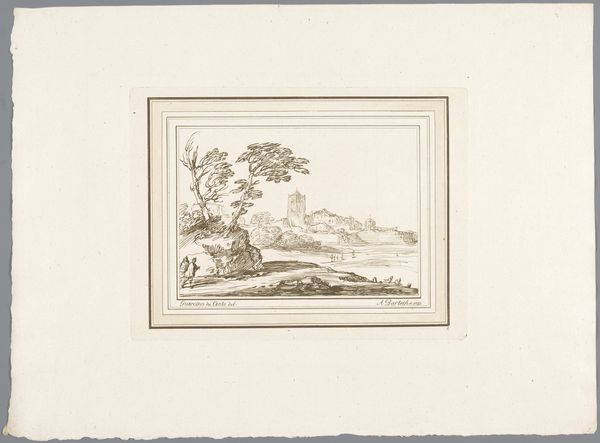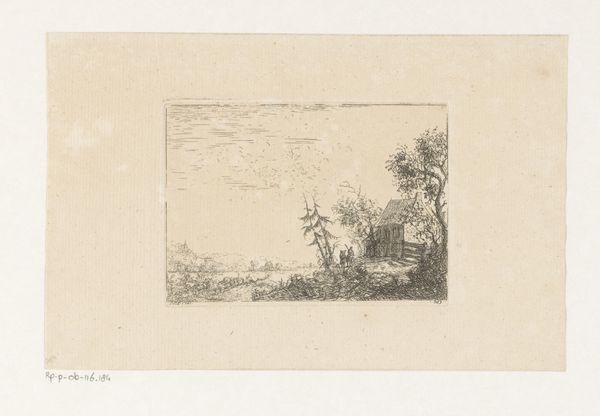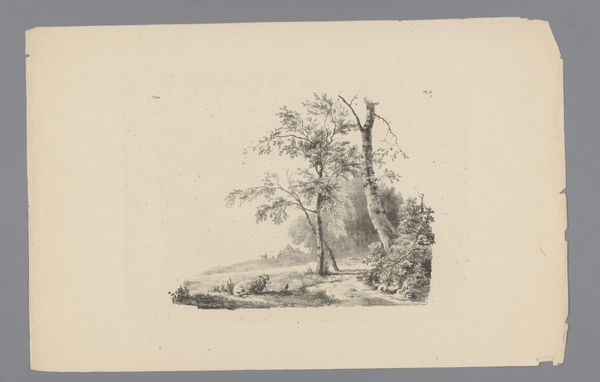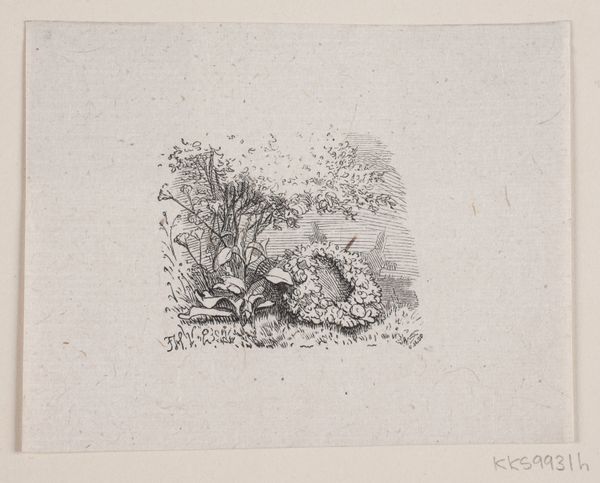
drawing, print, etching
#
drawing
# print
#
etching
#
landscape
#
etching
#
romanticism
Dimensions: 50 mm (height) x 78 mm (width) (plademaal)
Johan Bülow created this small landscape print using etching, a process with a long history linking craft and fine art. To make this print, Bülow would have covered a metal plate with a waxy ground, then scratched an image into it. Acid would then have been applied, biting away at the exposed metal. This painstaking process results in the fine, precise lines we see here. The varying depth of the lines creates the illusion of shadow and depth, essential to landscape art. Consider how labor-intensive this process was. Each print required careful preparation and skilled execution. The economics of printmaking meant multiple impressions could be made, democratizing images for a wider audience, and creating a new market for art. By focusing on the material and process, we can appreciate how Bülow's work bridged traditional craftsmanship and the burgeoning art market, reflecting the changing social landscape of his time.
Comments
No comments
Be the first to comment and join the conversation on the ultimate creative platform.

